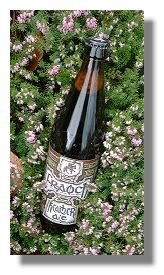
Hummus is easy to make at home, but it is a recipe that defies hard and fast measurements. You can flavor your own hummus any way you choose, the possibilities are endless.
The word hummus comes from the Arabic word for chickpea; which constitutes the main ingredient in the dish. Though the full name for the dish is hummus bi tahina, it is commonly referred to simply as hummus.
Ingredients
- Chickpeas - A.K.A. Garbanzo Beans - You can use canned chickpeas, but I highly recommend the dried variety. While they take longer to prepare, they do not contain the high levels of sodium found in most canned chickpeas. I also find they have more flavor and the water produced in cooking them adds a great deal to the flavor of the dish. About 1 to 1.5 cups of dried or 2 cans is a good place to start.
- Tahini - Also known as sesame paste, tahini adds a strong sesame flavor to hummus. Make sure you stir the jar well. Much like natural peanut butter, tahini tends to separate in the jar. If you have trouble finding tahini at the grocery store visit a local halal market or Mediterranean deli.
- Olive Oil - Any decent extra virgin olive oil will work.
- Garlic - 1 to 3 cloves, depending on how much you like garlic. Roasting the whole cloves in the oven, until golden brown, will bring out their sweetness.
- Lemon Juice - One large lemon works well.
- Spices - You can garnish the finished product with any number of spices. Salt and pepper are a must, but sumac, paprika, cyan pepper, chopped parsley or basil make great additions too.
Directions
If using dried chickpeas, soak them in water overnight or for 24 hours. Once they have been re-hydrated, rinse the beans thoroughly and cover them with water in a large pot. Boil the chickpeas for about 2 hours or until they are soft and save the water in which they were cooked.
For the next step you will need a food processor. You can also use a potato masher, but I have not tried this method. Since this is one of the oldest recipes in existence it should be possible to make it without the assistance of an electrical appliance. However, unless we enter a post apocalyptic world without power, or my food processor breaks, I'll stick with the modern method.
Blend the chickpeas in the food processor, slowly adding the cooking water until you have a thick, yet creamy, chickpea paste. Next, add about 1/3 cup of tahini, garlic (mashed or chopped), lemon juice and about two tablespoons of olive oil. Blend everything together and taste.
This is where the fun begins because you will want to add the spices to taste. Throw in a handful of pitted olives or some roasted red peppers. You may also need to add more Tahini, olive oil or cooking water to get the flavors right. Don't be afraid to play around with the recipe.
Garnish with some sumac, paprika, black olives and a little olive oil. You're sure to have a filling snack in which to dip pita chips or veggies. Enjoy!











